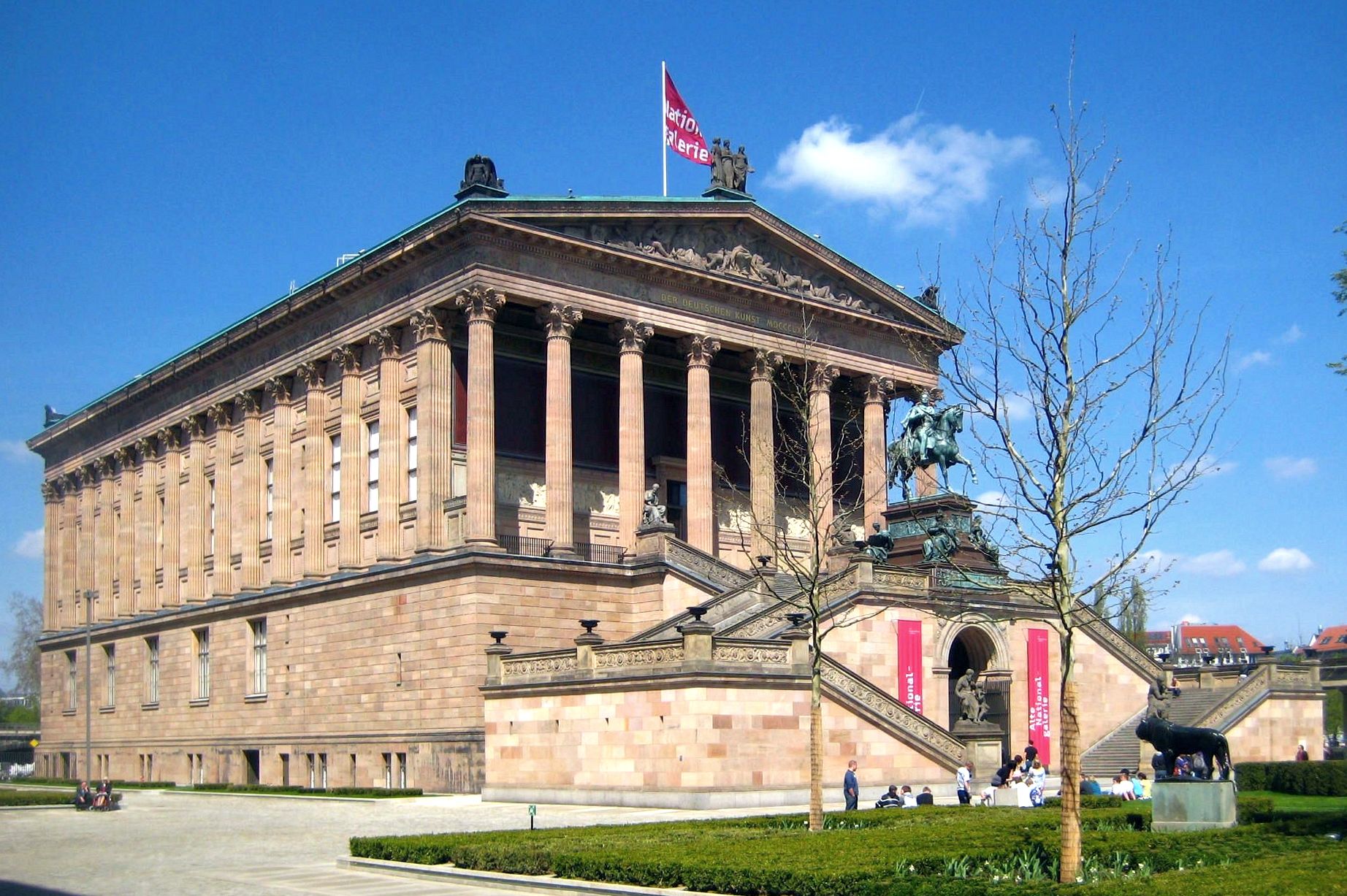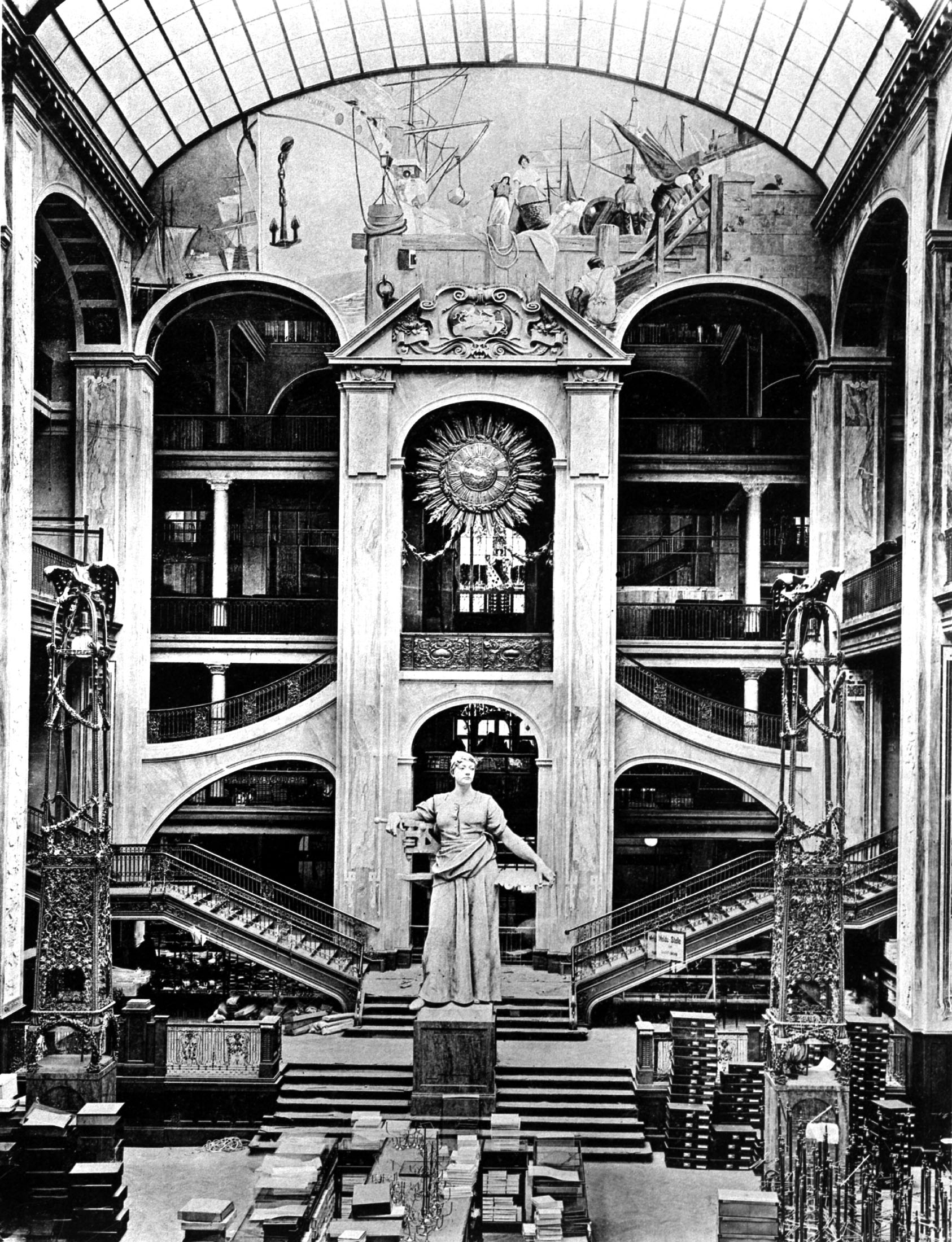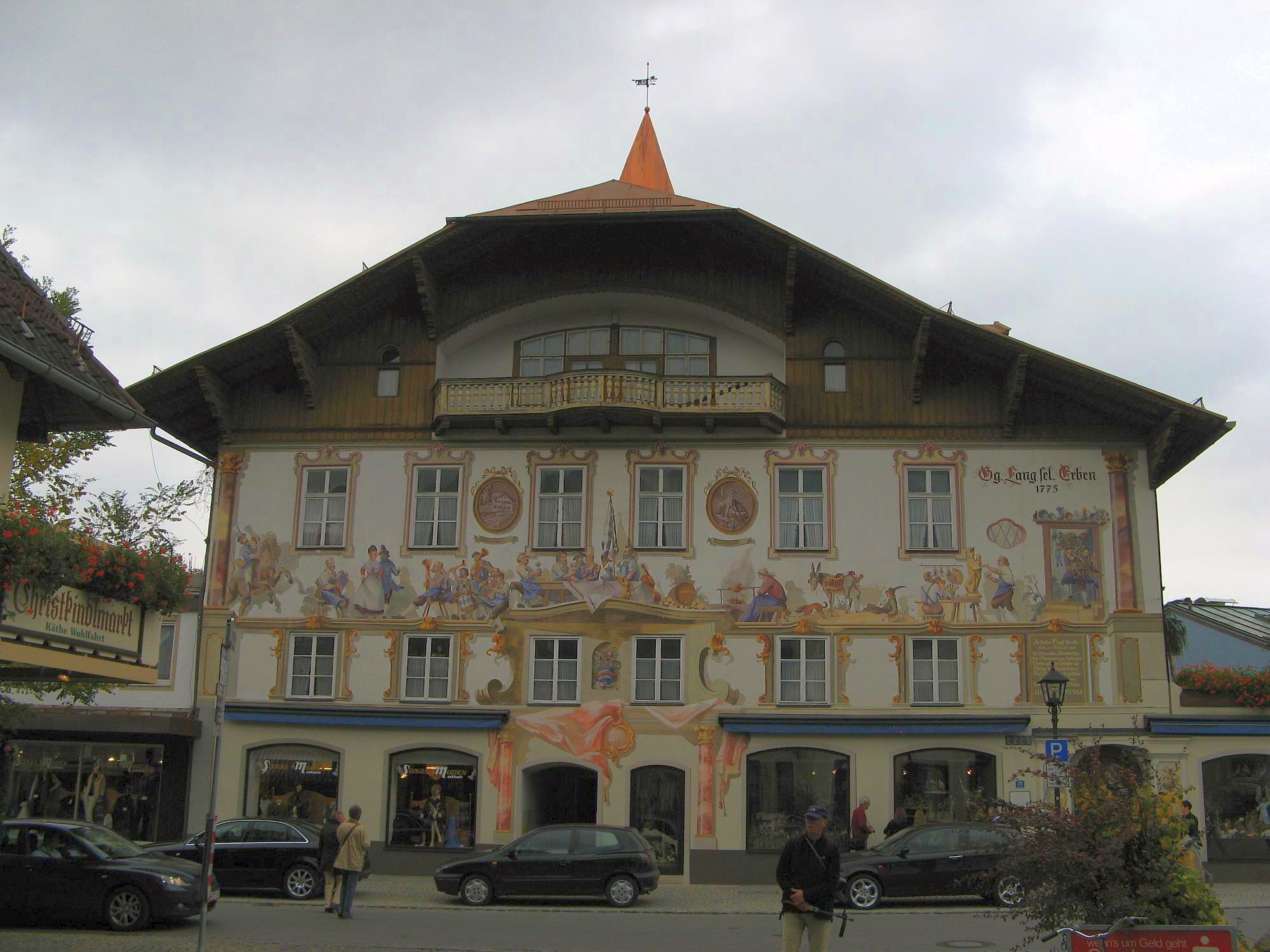|
Ignatius Taschner
Ignatius Taschner (9 April 1871 – 25 November 1913), also known as Ignaz Taschner, was a German sculptor, medalist, graphic designer and illustrator. Life Ignatius Taschner was born in 1871, he was the son of Bartholomew Taschner, a stonemason originating from Straubing. He spent his childhood and youth in Lohr am Main. From 1885 to 1888 he completed an apprenticeship as a stonemason in Schweinfurt with the sculptor Wilhelm Kämpf and worked there for a year as a journeyman. He then studied from 1889 to 1895 at the Munich Academy of Fine Arts under Syrius Eberle and Jakob Bradl. Among his fellow students were the sculptor Georg Wrba and Josef Rauch. On 27 April 1899, he married Helene Felber. Work In 1894, he received his first contract from the city of Schweinfurt to work on a war memorial. Around the turn of the century Taschner had been making a substantial impression on the artists of the Munich, Vienna and Berlin Secessions. Taschner's early period ended in 189 ... [...More Info...] [...Related Items...] OR: [Wikipedia] [Google] [Baidu] |
Bad Kissingen
Bad Kissingen is a German spa town in the Bavarian region of Lower Franconia and seat of the district Bad Kissingen. Situated to the south of the Rhön Mountains on the Franconian Saale river, it is one of the health resorts, which became famous as a "Weltbad" in the 19th century. In 2021, the town became part of the transnational UNESCO World Heritage Site under the name "Great Spa Towns of Europe", because of its famous mineral springs and its architecture exemplifying the popularity of spa resorts in Europe during the 18th through 20th centuries. History The town was first documented in the year 801 under the name ''chizzicha'' and was renowned above all for its mineral springs, which are recorded from as early as 823. At that time, Kissingen was under the domination of Fulda Abbey, later it fell to the Counts of Henneberg and was sold to the bishops of Würzburg in the 14th century. Kissingen was first mentioned as "oppidum" (town) in 1279. The town developed to ... [...More Info...] [...Related Items...] OR: [Wikipedia] [Google] [Baidu] |
Berlin Secession
The Berlin Secession was an art movement established in Germany on May 2, 1898. Formed in reaction to the Association of Berlin Artists, and the restrictions on contemporary art imposed by Kaiser Wilhelm II, 65 artists "seceded," demonstrating against the standards of academic or government-endorsed art. The movement is classified as a form of German Modernism, and came on the heels of several other secessions in Germany, including Jugendstil and the Munich Secession. History Rise and reign of the Secession The upheavals that led to the formation of the Berlin Secession began in 1891 on the occasion of the Great International Art Exhibition in Berlin. A dispute began after the commission of the Association of Berlin Artists rejected images done by Edvard Munch. In May 1898, under the leadership of Walter Leistikow, Franz Skarbina and Max Liebermann, various artists converged to form a "free association for the organization of artistic exhibitions". This group was governed b ... [...More Info...] [...Related Items...] OR: [Wikipedia] [Google] [Baidu] |
Nationalgalerie (Berlin)
The National Gallery (german: Nationalgalerie) in Berlin, Germany, is a museum for art of the 19th, 20th and 21st centuries. It is part of the Berlin State Museums. From the Alte Nationalgalerie, which was built for it and opened in 1876, its exhibition space has expanded to include five other locations. The museums are part of the Berlin State Museums, owned by the Prussian Cultural Heritage Foundation. Locations The holdings of the National Gallery are currently shown in five locations: * Alte Nationalgalerie: 19th-century art, on Museum Island * Neue Nationalgalerie: 20th-century art, at the Kulturforum. The building, designed by Ludwig Mies van der Rohe, opened on 15 September 1968. * Berggruen Museum: in Charlottenburg, showing classics of 20th-century modern art collected by Heinz Berggruen; added to the National Gallery in 1996. * Scharf-Gerstenberg Collection: in Charlottenburg, showing 20th-century art from French Romanticism to Surrealism; added to the National Galle ... [...More Info...] [...Related Items...] OR: [Wikipedia] [Google] [Baidu] |
Staatliche Museen Zu Berlin
The Berlin State Museums (german: Staatliche Museen zu Berlin) are a group of institutions in Berlin, Germany, comprising seventeen museums in five clusters, several research institutes, libraries, and supporting facilities. They are overseen by the Prussian Cultural Heritage Foundation and funded by the German federal government in collaboration with Germany's federal states. The central complex on Museum Island was added to the UNESCO list of World Heritage Sites in 1999. By 2007, the Berlin State Museums had grown into the largest complex of museums in Europe. The museum was originally founded by King Friedrich Wilhelm III of Prussia in 1823 as the Königliche Museen (in English, Royal Museums). The director-general of the Berlin State Museums is Michael Eissenhauer. Museum locations Berlin-Mitte * Museum Island ** Altes Museum: Roman and Greek Classical Antiquities ** Alte Nationalgalerie: 19th century sculptures and paintings. ** Bode-Museum: the Numismatic Collect ... [...More Info...] [...Related Items...] OR: [Wikipedia] [Google] [Baidu] |
Volkspark Friedrichshain
Volkspark Friedrichshain () is a large urban park on the border of the Berlin neighborhoods of Friedrichshain and Prenzlauer Berg. The oldest public park in Berlin, at 52 hectares, it is also the fourth-largest, after Tempelhofer Park (>300 hectares), Tiergarten (210 hectares), and Jungfernheide (146 hectares). History The park was originally conceived by the landscape gardener Peter Joseph Lenné, and in 1840 the Berlin city council decided to construct it on the occasion of the centennial of Frederick the Great's ascension to the Prussian throne. The oldest parts of the park were laid out in 1846-1848 based on plans by Johann Heinrich Gustav Meyer, a landscape architect who held the post of city park director, and learned his craft in the botanical garden of Schöneberg. The park was constructed on the space of a former vineyard, and officially opened in 1848 with an area of 46 hectares. Mid 19th Century - 1945 The size, shape, and layout of the park have changed ov ... [...More Info...] [...Related Items...] OR: [Wikipedia] [Google] [Baidu] |
Märchenbrunnen
The ''Märchenbrunnen'' (simply the "fountain of fairy tales") is located in the Volkspark Friedrichshain in Berlin. In 1893 the authorities of Berlin issued the artistic entrance to the National Park Friedrichshain. The ''fountain of fairy tales'' was commissioned by the National Park and later designed by Ludwig Hoffmann (architect), Ludwig Hoffmann. Hoffmann put forward the idea of a fountain in the park to depict fairy tales. Hoffmann describes this in his memoirs. Design Overall Plan The overall designs for the fountain complex came from architect and longtime Berlin city councilor, Ludwig Hoffmann (architect), Ludwig Hoffmann. The centerpiece of the design is a 34 x 54 meter (112 x 177 ft) fountain in Neo-Baroque style. The fountain basin is made up of four cascading waterfalls which contain one large and nine smaller individual fountains, as well as seven water-spouting frog figurines, one of which is denoted as being The Frog Prince. On the east side, the cascading ... [...More Info...] [...Related Items...] OR: [Wikipedia] [Google] [Baidu] |
Deutscher Künstlerbund
The Deutscher Kuenstlerbund (Association of German Artists) was founded in 1903 the initiative of Count Harry Kessler, promoter of arts and artists, Alfred Lichtwark, director of the Hamburg Art Gallery and the famous painters Lovis Corinth, Max Klinger and Max Liebermann among others. Thus a supra-regional association which surpassed the existing secessions came into existence for the first time. Its founders were determined to get rid of the restrictions imposed by the national cultural authorities. Their aim was to ensure the freedom of art, to offer a public forum for different artistic trends and to support young artists. These intentions were taken into account at annual exhibitions which took place in various German cities and sometimes in foreign countries. History The Deutscher Künstlerbund organized first exhibition on June 1 to October 31, 1904 and the second on May 2 to October 6, 1905, inaugurating at the same time its showrooms in the new exhibition building, ... [...More Info...] [...Related Items...] OR: [Wikipedia] [Google] [Baidu] |
Ludwig Hoffmann (architect)
Ludwig Ernst Emil Hoffmann (30 July 1852 – 11 November 1932) was a German architect and was one of the most famous architects of Berlin. Life and career Ludwig Hoffmann was born in Darmstadt and educated at the Kunstakademie Kassel (Kassel Academy of Art) and the Bauakademie (Academy of Architecture) in Berlin. In 1879, after passing the first state examination, Hoffmann began working for the government of Berlin as a construction foreman under Franz Heinrich Schwechten. His architectural career began in 1880 when he and Peter Dybwad, both unknowns, won the competition to design the Supreme Court building in Leipzig against 118 other entries. In 1895, the year it was completed, he returned to Berlin and that June married Marie Weisbach, a banker's daughter. In 1896, Hoffmann became ''Stadtbaurat''—director of urban planning and construction—for Berlin. He served for 28 years until 1924 (mandatory retirement age being 72) and is now regarded as the most impor ... [...More Info...] [...Related Items...] OR: [Wikipedia] [Google] [Baidu] |
Alfred Messel
Alfred Messel (22 July 1853 – 24 March 1909) was a German architect at the turning point to the 20th century, creating a new style for buildings which bridged the transition from historicism to modernism. Messel was able to combine the structure, decoration, and function of his buildings, which ranged from department stores, museums, office buildings, mansions, and social housing to soup kitchens, into a coherent, harmonious whole. As an urban architect striving for excellence he was in many respects ahead of his time. His best known works, the Wertheim department stores and the Pergamon Museum in Berlin, reflect a new concept of self-confident metropolitan architecture. His architectural drawings and construction plans are preserved at the Architecture Museum of the Technical University of Berlin. Early life and career Messel was the third son of Emilie (Lindheim) and banker Simon Messel. The family owned a bank which was later managed by Alfred's brother Ludwig, first in Darmst ... [...More Info...] [...Related Items...] OR: [Wikipedia] [Google] [Baidu] |
Simplicissimus
:''Simplicissimus is also a name for the 1668 novel Der abenteuerliche Simplicissimus, Simplicius Simplicissimus and its protagonist.'' ''Simplicissimus'' () was a satire, satirical German language, German weekly magazine, headquartered in Munich, and founded by Albert Langen in April 1896. It continued publishing until 1967, interrupted by a hiatus from 1944–1954, and became a biweekly in 1964. It took its name from the protagonist of Hans Jakob Christoffel von Grimmelshausen, Grimmelshausen's 1668 novel ''Der Abenteuerliche Simplicissimus Teutsch''. Combining brash and politically daring content, with a bright, immediate, and surprisingly modern graphic style, ''Simplicissimus'' published the work of writers such as Thomas Mann and Rainer Maria Rilke. Its most reliable targets for caricature were stiff Prussian military figures, and rigid German social and class distinctions as seen from the more relaxed, liberal atmosphere of Munich. Contributors included Hermann Hesse, Gusta ... [...More Info...] [...Related Items...] OR: [Wikipedia] [Google] [Baidu] |
Ludwig Thoma
Ludwig Thoma (; 21 January 1867 in Oberammergau – 26 August 1921 in Tegernsee) was a German author, publisher and editor, who gained popularity through his partially exaggerated description of everyday Bavarian life. After graduation from the Imperial Latin School in Landstuhl (today: Sickingen- Gymnasium Landstuhl), he first studied Forestry in Aschaffenburg, then Law until 1893 in Munich and Erlangen. Subsequently, he settled down as a lawyer, at first in Dachau, later in Munich. After 1899, he worked for the magazine ''Simplicissimus'' and published humorous narrations, comedies, novels and stories. Thoma satirized Bavarian rural and small-town life. His serious peasant novels ''Andreas Vöst'' (1905), ''Der Wittiber'' (1911), and ''Der Ruepp'' (1922), as well as his humorous collections ''Assessor Karlchen'' (1900), ''Lausbubengeschichten'' (''Tales of a Rascal'', 1904), and ''Tante Frieda'' (''Aunt Frieda'', 1906), are characterized by authenticity of regional language ... [...More Info...] [...Related Items...] OR: [Wikipedia] [Google] [Baidu] |








